- Home
- Company
- Health, Safety and Environment
- Products and Technology
- Safety Features
Safety features
Hilti technology designed to help make your work safer and more comfortable
Unfortunately, when working with some power tools – particularly those designed to drill, cut and grind – there are some inherent risks to you and your teams.
For example, if a drill bit snags, binds or hits rebar, it can kickback on the user, potentially resulting in accident and injury. Or if a grinding or cutting disc breaks, the broken bits can hit the user or other construction workers in the vicinity. When working at height, unpredictable events like these increase the risk of further injury from subsequent falls and corded tools with trailing cables can cause slips, trips and falls.
As a responsible employer, you naturally want to protect your team from accident and injury and there's lots of mechanisms you can put in place to help mitigate these risks.
At Hilti, we recommend a range of technologies and working practices, structured here under the “STOP Principle” of Substitution, Technical, Organisational and Personal Protective Equipment (PPE), that can help you do just that.
Stop kickback in its tracks

When drilling through reinforced concrete, drill bits can jam or bind on rebar, especially in high speed or torque applications. When that happens, the tool can “kickback”, continuing to spin uncontrollably while the bit is stuck in the base material, which means there's a high risk of wrist injury. Additionally, the momentum of the tool can throw the worker off balance, which is particularly hazardous when working at height.
Substitution: Remove risks by using alternatives

Designing out drilling
Place our HAC cast-in anchor channels around the rebar before the concrete is poured. This means there is little to no drilling drilling required and therefore no chance of hitting rebar and reduced exposure to hand-arm vibration or dust.
Technical: Choose products that reduce risk

Choosing tools with technologies such as Hilti Active Torque Control (ATC) can help reduce the hazard of kickback.
Advanced sensors and a motor brake help reduce kickback, by stopping the tool body from spinning uncontrollably, if a drill bit snags on rebar, or other hidden materials. This can prevent wrist injuries and other accidents that could occur from a tool spinning uncontrollably.
ATC is featured in a range of Hilti tools, including:
Organisational: Different working methods

Colleagues at all levels should be knowledgeable about the risks of kickback and trained to minimise their exposure to it. To help you with this, why not speak to one of our expert Account Managers who offer support, advice and practical tool box talks onsite.
Personal protective equipment

When using power tools and other equipment, workers must have full Personal Protective Equipment (PPE), including hard hat, eye protection, ear protection, overalls, gloves, safety shoes and other necessary items.
It’s also essential that all construction workers receive training on the safe use of their tools and carefully follow the operating instructions. When drilling or chiseling you should always hold the tool firmly with both hands, keeping a stable stance. Because there is always a chance that a bit will jam or bind, you should always keep your body out of the kickback recoil area – even if using a tool with Active Torque Control (ATC).
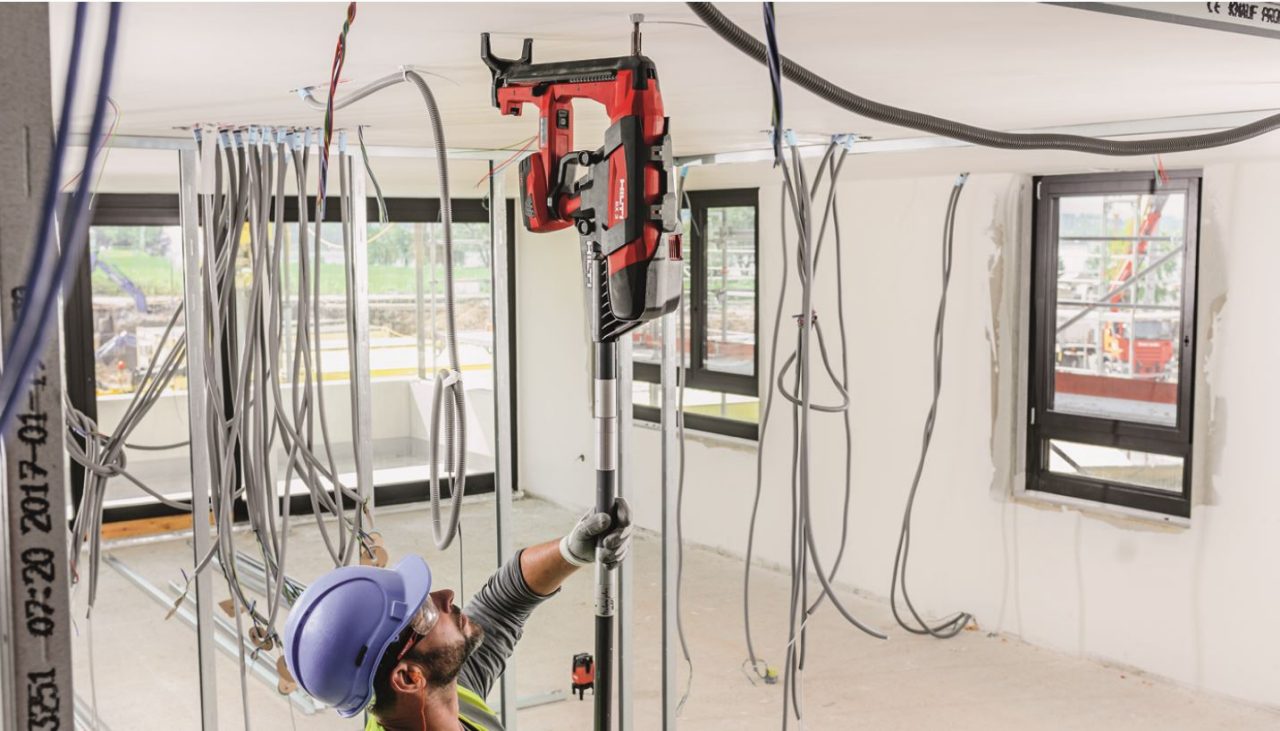
Avoid the risk of working at height
With our Direct Fastening technology and pole tools
Overhead drilling and fixing can be a risky and expensive business. Step ladders are fine for the odd job here and there but for serial applications, a scissor lift is usually required to work at height. Then you have the issue of dust exposure to consider, as gravity naturally forces dust and debris into the worker's face if effective dust removal systems aren't used. Add to that the vibration exposure from drilling and fixing tools and it becomes a relatively risky application to manage.
With our range of direct fastening pole tools, you can virtually eliminate all three risks, as direct fastening delivers little to no vibration or dust, and with the pole tool extension, you can complete the fixings from the safety of the floor - no risk of working at height.
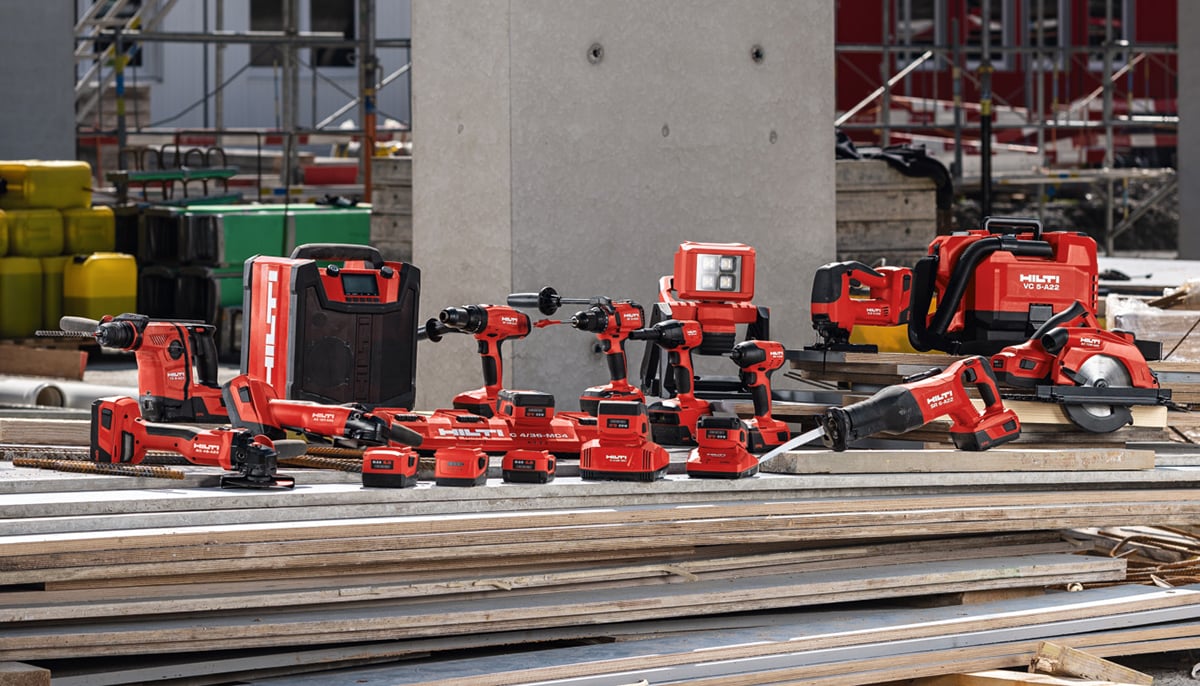
Minimise slips, trips and falls
With our range 22V cordless tools for a variety of applications
We understand you need tools that can finish the job without interruption and while corded tools offer that continuous power, they bring other risks such as slips trips and falls and it can be a hassle trying to find a source of power onsite.
That’s why we've developed a comprehensive range of cordless tools and batteries that deliver corded power, no-strings-attached flexibility and a battery charge that can last the whole day.
From measuring and alignment to cutting and drilling, our range of cordless tools continuously delivers maximum performance for every application.
See what ditching the cord can mean for your business.
Reducing the risk of cuts

When using cutting tools - such as angle grinders, petrol saws and handheld saws, particular care should be taken due to the potential risk of cuts. Injuries can occur if a blade or disc comes into contact with a construction worker and if a grinding or cutting disc breaks, the broken bits can hit the user or other workers.
Applying the “STOP Principle” of Substitution, Technical, Organisational and Personal Protective Equipment (PPE) can increase safety in the following ways:
Substitution: Remove the risks of cutting on the construction site

Reduce the amount of material that needs to be cut onsite by ordering pre-cut items from the manufacturer (Hilti offers this service) or by cutting them offsite in a more controlled and safer environment. Prefabrication is on the rise in the industry across Europe[1] and is set to be a key driver of reduced risk onsite as more and more applications are taken into the manufacturing process.
Technical: Safety features to help reduce risk

At Hilti, innovation is in our DNA. That's why we continue to invest around 6% of our annual turnover in research and development to help make your work faster, safer and more productive.
It's often the little things that can make a big difference to reduce risk onsite so we continue to incorporate new safety features into our tools to minimise the risk of injury, such as our dead man's switch, blade break technology and disc guard design.
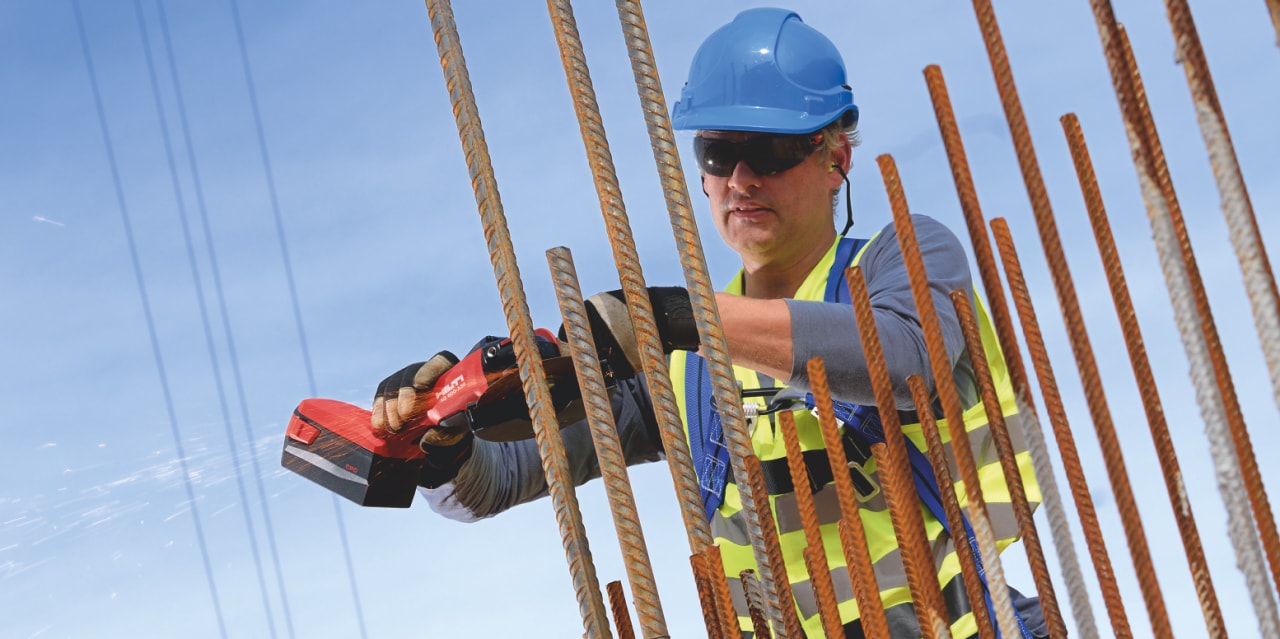
Dead man's switch
Automatically stops the tool when the trigger is released, avoiding hazardous spinning blades when the tool is not in use.
Check out our range of cordless angle grinders which feature a dead man's switch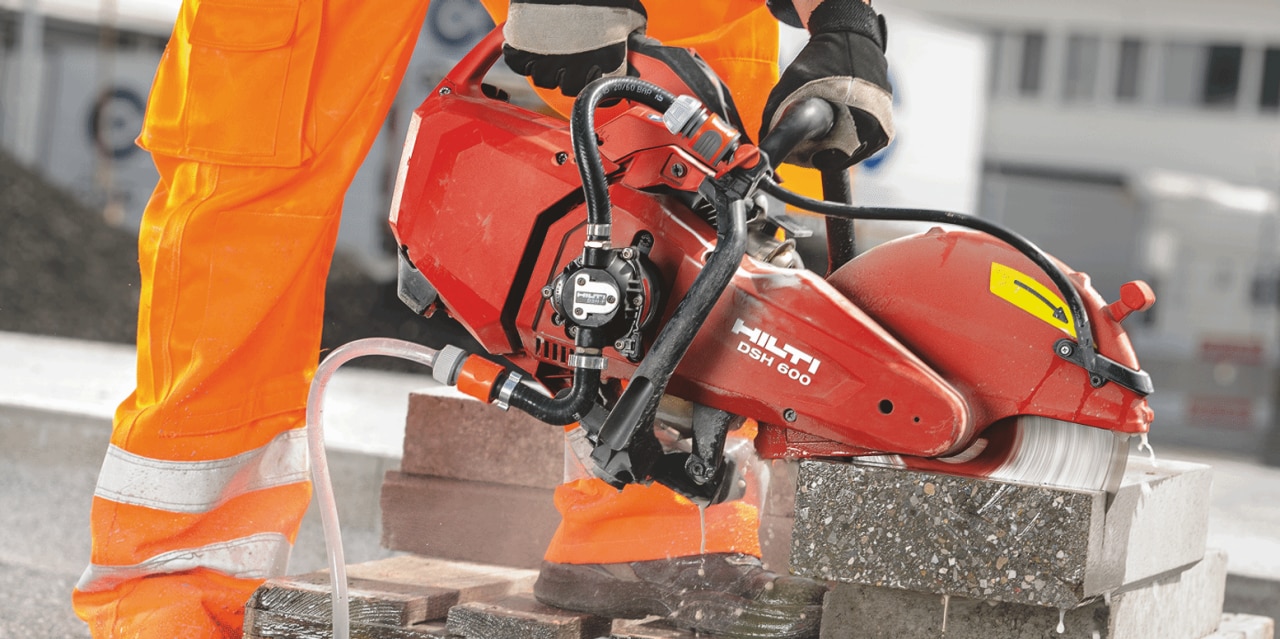
Quick-acting blade brake
Quick-acting brake stops the disc within just a few seconds to reduce the risk of dangerous spinning blades – ideal when working in cramped conditions.
Our blade brake technology features on a whole range of Hilti tools including our cordless angle grinders, circular saws and petrol saws.
Check out our range of cutting tools with blade brake technology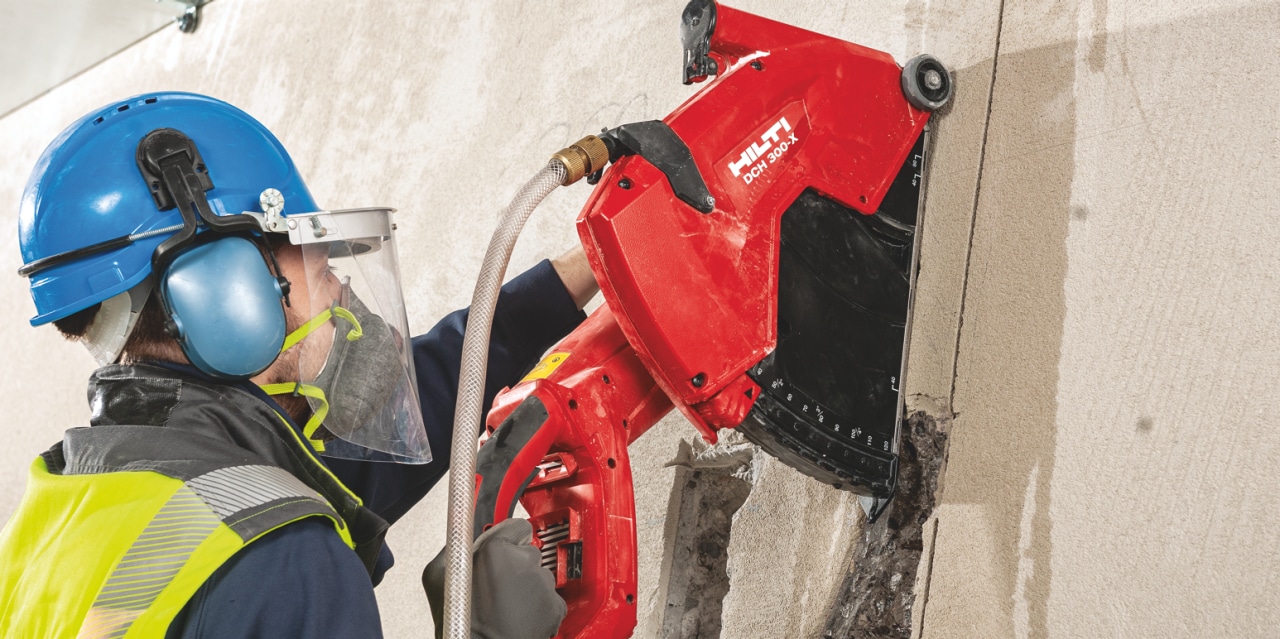
Disc guard
Protects workers – and those around them – from fragments of broken disc hitting them at high speed.
Check out our range of cutting tools with a disc guardOrganisational: working practices to improve safety

Reviewing organisational practices and procedures is vital to increase construction site safety for workers using cutting tools. Measures you can take include:
- Regular tool and consumables checks: tools should be regularly tested, maintained and cords and consumables checked for damage. Workers should complete a visual check of the tool – cord, consumable, disc guard etc. – before starting work
- Policies that improve safety: to ensure guards, covers or other safety features are in good working order and are not tampered with
- Comprehensive training: colleagues at all levels should receive detailed industry training and regular refresher sessions to ensure workers understand the risks of working with cutting tools.
Need help identifying opportunities to minimise risk onsite and support with training your team on safe working practices? Why not speak to one of our expert Account Managers who offer support, advice and practical tool box talks onsite.
Personal protective equipment

When using cutting tools, workers must have full Personal Protective Equipment (PPE), including hard hat, eye protection, ear protection, overalls, gloves, safety shoes and other necessary items.
Cutting tools should be guided with both hands and used from a safe and balanced standing position. To avoid risk to others, they shouldn’t be used in proximity to other construction workers.





